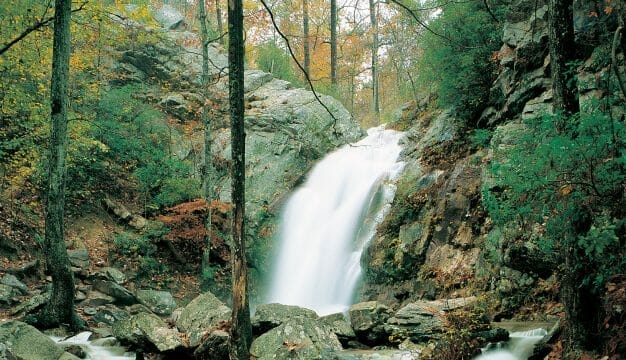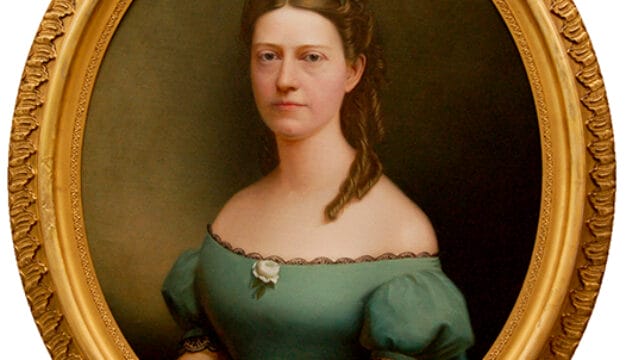William Henry Sheppard
William Henry Sheppard Jr. (1865-1927) was a pastor and missionary, social worker, explorer, noted collector of African art, and fellow of the Royal Geographical Society. He was a missionary in equatorial Africa for 21 years and travelled widely in North America and Europe as well. Although not a native of Alabama, Alabama institutions and people had a profound and lasting effect on him, especially his seminary training in Tuscaloosa, Tuscaloosa County, and his missionary partnership with Samuel Lapsley of Selma, Dallas County.
Sheppard was born in Waynesboro, Virginia, on March 8, 1865, to William Henry Sheppard Sr., a barber, and Fannie Francis Martin Sheppard, a maid. His mother was a free person of color, but his father’s legal status at the time of Sheppard’s birth is unknown. As a boy, Sheppard attended local schools while working as a stable hand for a white family and then moved to nearby Staunton to live with his aunt and work for white dentist S. Homer Henkel. In 1880, Sheppard moved to Hampton, Virginia, and began studies at Hampton Normal and Industrial Institute (now Hampton University), taking evening classes from recent graduate Booker T. Washington. He also formed a close friendship with Hampton’s chaplain, Hollis B. Frissell, helping him found a mission in the poor black community of Slabtown, outside Hampton.
Upon graduating in 1883, Sheppard entered the Tuscaloosa Theological Institute (present-day Stillman College) in Alabama. There, he met Lucy Gantt, a student at Talladega College, the state’s oldest private historically black college. By the time they had finished their studies in 1886, they were engaged. Sheppard was ordained in the Presbyterian Church of the United States (PCUS) at Zion Presbyterian Church in Atlanta in 1887 and served as its pastor for the next two years, but his greatest desire was to serve as a missionary in an African nation. Although Sheppard had dreamed of traveling to Africa since childhood, African Americans could only travel there as missionaries if they were supervised by a white missionary. In 1889, the PCUS commissioned Sheppard and Samuel Lapsley, a young white minister from Selma, to establish a mission station in the Congo Free State (today the Democratic Republic of the Congo). Lucy remained behind, performing with the Fisk Jubilee Singers of Fisk University in Nashville, Tennessee, and then teaching in a school for African American children.
Sheppard and Lapsley travelled to Africa in 1890, destined for Luebo on the Kasai River, a tributary of the Congo. There, they founded the American Presbyterian Congo Mission. In the early years, Lapsley spent much of his time traveling and taking care of diplomatic and financial matters, while Sheppard developed skills that would benefit him for the next 20 years: learning African languages, preaching, negotiating with local leaders, and hunting a variety of animals to feed villagers as well as missionaries. Early in 1892, Lapsley was summoned to a meeting with the Belgian governor general in Léopoldville; he arrived in May and died there soon after. Sheppard mourned for him as a “friend and brother,” and carried on alone, eventually joined by other U.S. missionaries, white and black.
Sheppard was an explorer as much as he was a missionary. He travelled over the bush country, studying its routes and natural features. He also visited with the Kuba people, despite warnings that the tribal king threatened outsiders with death. Sheppard had spent some time learning the Kuba language and was attracted to their culture, and they in turn developed a high regard for Sheppard.
On Sheppard’s first return home, he stopped in England, where he met Queen Victoria and was inducted into the Royal Geographical Society. Back in the United States, he visited churches, preaching and giving speeches about his experiences in the Congo to win financial support and recruits for the mission effort. He and Lucy were married in 1894, and the couple would have four children, two of whom died in Africa. She returned to the Congo with him and managed the mission school, learned the local languages, and led the choir. The Sheppards became acknowledged leaders among the missionary community that grew up at Luebo, one in which black and white American missionaries and black Africans lived and worked together in a way that was not possible in the United States at the time. Their mission colleagues included, among others, Alabama-born Maria Fearing, who had been Lucy’s roommate at Talladega College. Lucy returned to the United States in 1898 soon after the birth of her third child, and after her departure, Sheppard had a series of relationships with other women, fathering at least one child outside his marriage.
During Sheppard’s years in Africa, the continent was plundered by outsiders for its rich natural resources. King Leopold II of Belgium carved out a domain in the Congo Free State, imposing a high tax on the local tribes, to be paid in balls of rubber. Men were forced to gather rubber sap in the forests; if a man failed to meet his quota, his right hand might be severed. The Belgian authorities discouraged farming and food gathering because such activities took time away from gathering rubber, so many people starved. William Morrison, a mission colleague of Sheppard, was the first to speak out against the abuses. When Morrison heard that a town in Kuba territory had been ravaged by the Zappo-Zaps, a mercenary tribe that dealt in rubber, ivory, and slaves on behalf of rubber companies, he suggested Sheppard investigate. Sheppard went alone, armed only with a notebook and a small camera. The Zappo-Zap raiders, taking Sheppard for a representative of the traders, proudly gave him a guided tour. He saw grisly scenes: partially dismembered corpses, 81 severed hands, and human flesh cooking over a fire. The leader of the Zappo-Zaps boasted of similarly destroying other towns.
Sheppard made notes and took pictures of the atrocities and lectured about them back in the United States. In January 1908, he published an article on the situation in Morrison’s missionary newspaper, the Kasai Herald. He also criticized the supposedly “civilized” kingdom of Belgium for promoting and backing the atrocities. The Kasai Rubber Company sued Sheppard and Morrison for libel. Charges against Morrison were dropped, but in September 1909 Sheppard appeared in court with the support of 20 Kuba witnesses and a Belgian lawyer. Reports of the atrocities continued to leak out, and two American diplomats were sent by Pres. William Howard Taft to offer their help. Sheppard was acquitted, King Leopold was disgraced, and the Belgian parliament took control of the Congo Free State.
In 1910, Sheppard returned to the United States ravaged by malaria. Because of the rumors of his many affairs, the PCUS put him on probation for 15 months and required him to give up his mission appointment. In 1912, the Sheppards moved to Louisville, Kentucky, where William took over the pastorate of Grace Presbyterian Church and oversaw operations of the Presbyterian Colored Mission. In the years following his return from Africa, Sheppard was honored for his work there; he was received at the White House by Pres. Theodore Roosevelt on January 14, 1905. He was praised by sociologist and civil rights activist W. E. B. DuBois and travelled with Booker T. Washington. Sheppard suffered a stroke and died on November 25, 1927, in Louisville; Lucy died in 1955. They were buried together in Louisville Cemetery, a historic African American cemetery founded in 1886. Sheppard’s tombstone is inscribed “Missionary to the Congo, 1890-1910.”
In the years after his death, Sheppard was almost forgotten, but Adam Hochschild’s best-selling King Leopold’s Ghost in 1998 brought him back to public attention. Two full-length biographies have since been published, recognizing his achievements as a missionary, an explorer (he has sometimes been called the “Black Livingstone” after British explorer David Livingstone), and an advocate for the people of Africa. He is also recognized as the one of the first African Americans to collect African art; his collection of Kuba artefacts is preserved in the Hampton University Museum as the William H. Sheppard Collection of African Art. His alma mater, Stillman College, honored Sheppard by naming its library after him, and the Presbyterian Church named its Central Alabama Presbytery Sheppards and Lapsley to commemorate the work of all three missionaries.
Additional Resources
Lapsley, Samuel Norvell, et al. Four Presbyterian Pioneers in Congo: Samuel N. Lapsley, William H.Sheppard, Maria Fearing, Lucy Gantt Sheppard. Anniston: First Presbyterian Church, 1965.
Hochschild, Adam. King Leopold’s Ghost: A Story of Greed, Terrorism, and Heroism in Colonial Africa. Boston: Houghton Mifflin, 1998.
Kennedy, Pagan. Black Livingstone. New York: Viking, 2002.
Phipps, William E. William Sheppard: Congo’s African American Livingstone. Louisville, Ky.: Geneva Press, 2002.
Sheppard, William H. Presbyterian Pioneers in Congo. Richmond: Presbyterian Committee of Publication, 1917.
Turner, John G. “A ‘Black-White’ Missionary on the Imperial Stage: William H. Sheppard and Middle-Class Black Manhood.” Journal of Southern Religion 9 (2006); http://jsr.fsu.edu/Volume9/Turner.htm.



